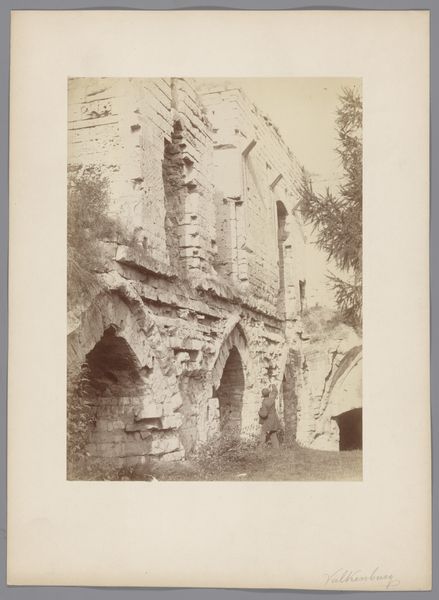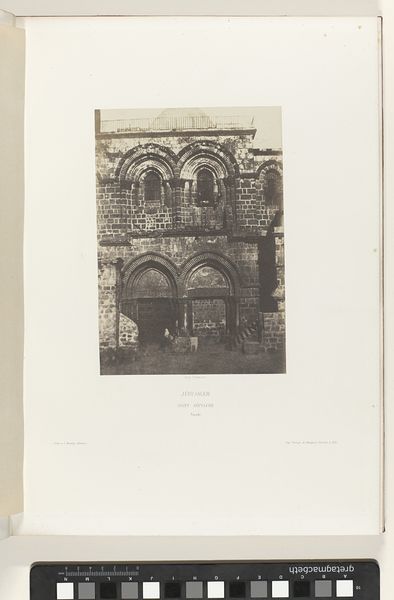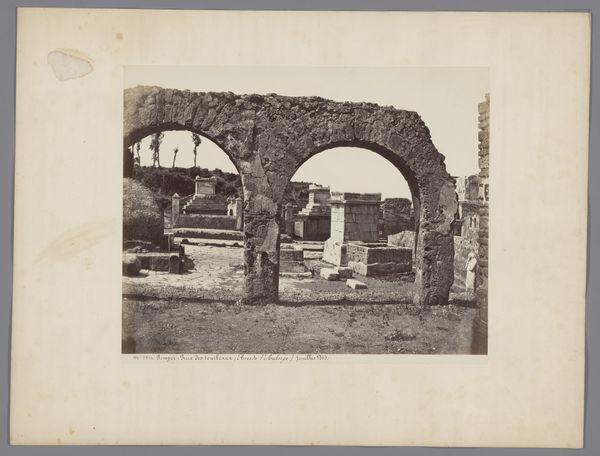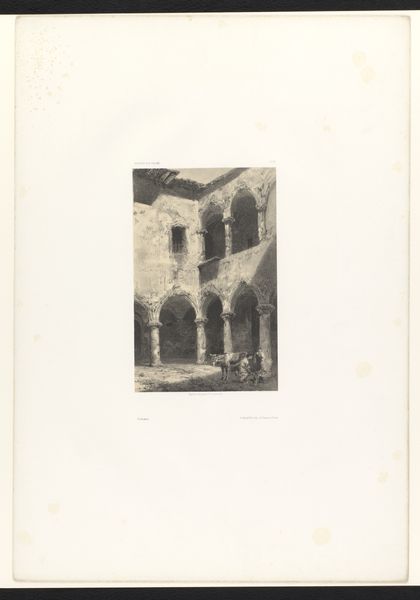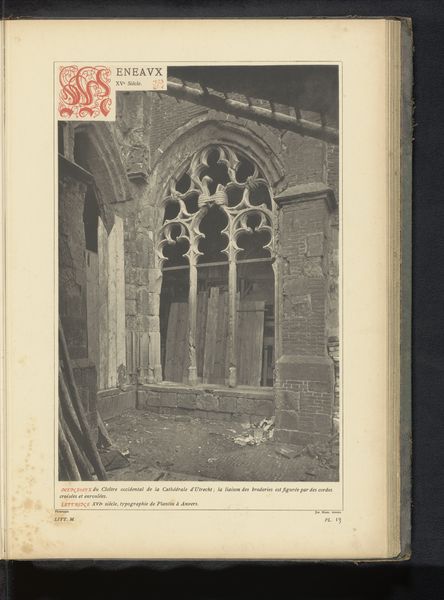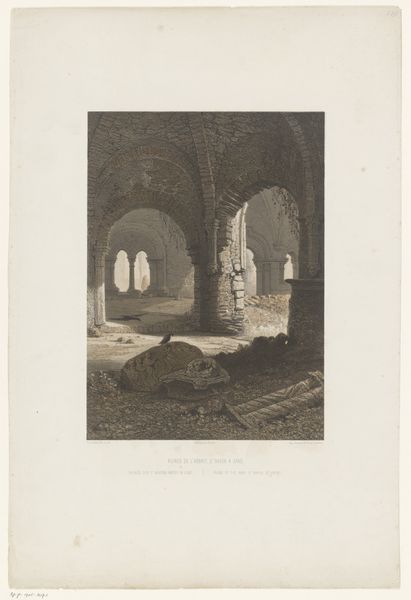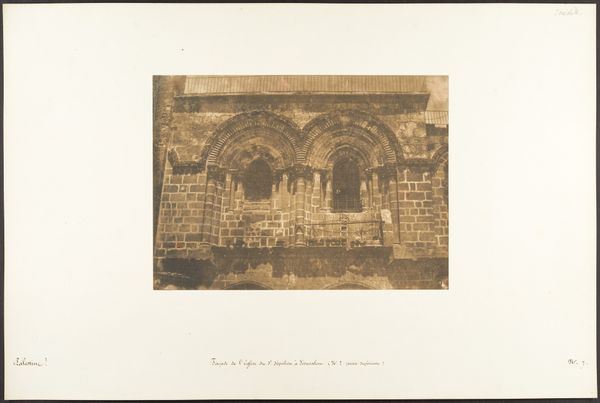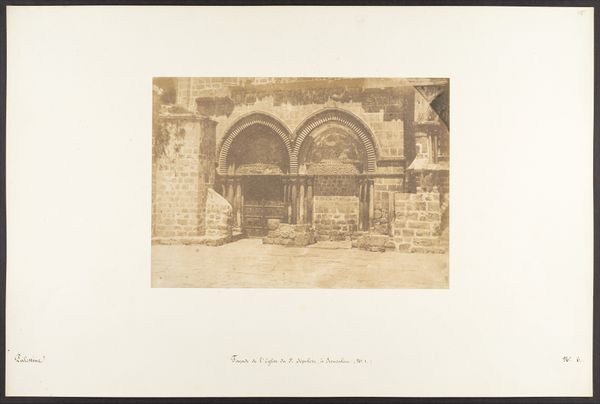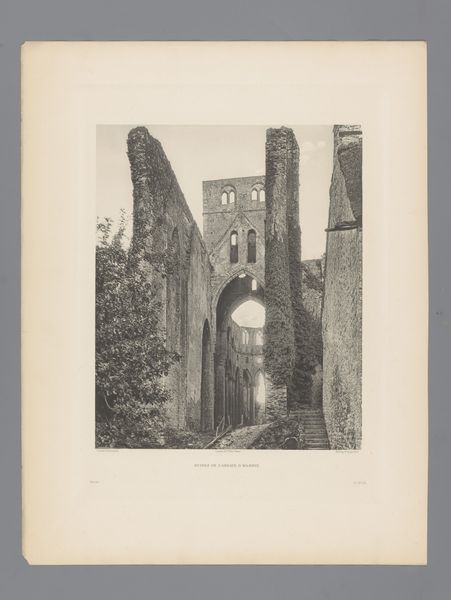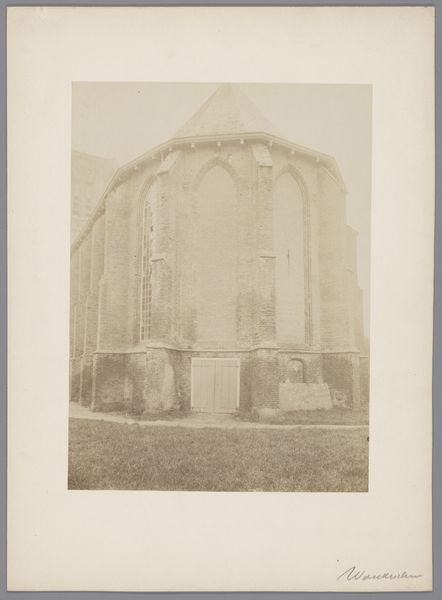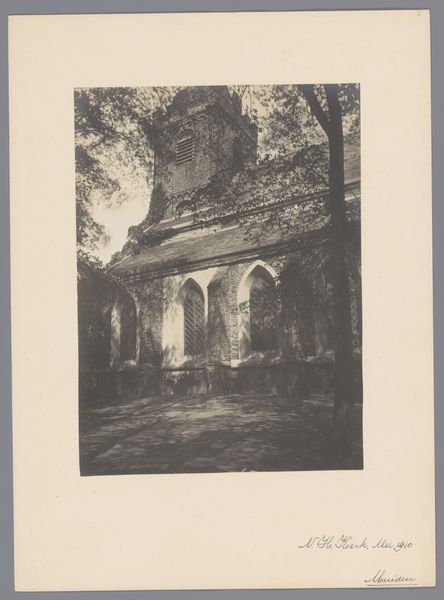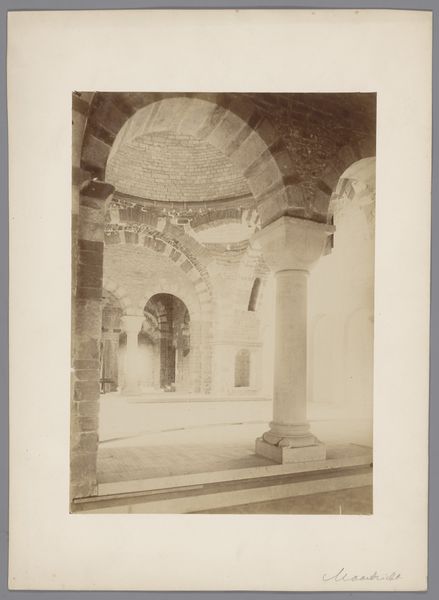
photography, gelatin-silver-print
#
landscape
#
photography
#
gelatin-silver-print
#
islamic-art
Dimensions: height 233 mm, width 165 mm
Copyright: Rijks Museum: Open Domain
Editor: We are looking at Francis Frith's gelatin-silver print "Ruins of the Al-Hakim Mosque in Cairo," dating from before 1862. The damage to the mosque is dramatic, lending it an atmosphere of melancholy. What compositional choices stand out to you in this piece? Curator: The visual texture is striking. Notice the interplay of light and shadow across the fractured surfaces. The artist utilizes the formal elements of line and form, the archways, the cylindrical minaret—to create a sophisticated geometrical composition despite the ruinous subject. Consider the formal significance of framing. How does Frith create a composition from disintegration? Editor: So, beyond just documenting decay, you're suggesting that Frith finds an inherent order within it. Curator: Precisely. Observe the layering of space. The arches diminishing into the background pull the eye through the depth of field. It's more than just a record; it's an exercise in pictorial construction. It is not about what it represents, but how those components relate within the image itself. It exemplifies formalism, doesn’t it? Editor: I can see that. He seems more focused on shapes than historical context. It's like he’s less concerned about capturing a specific moment and more invested in abstracting the structure. What should the audience takeaway from that choice? Curator: Frith shows that ruin can still offer rich visual harmony, that form triumphs, ultimately. How a simple thing like point-of-view and careful framing and lighting brings out the shapes that hide behind its historical story. The interplay of tones, dark versus light, that provides its dynamism, don’t you agree? Editor: Definitely, and now I am curious how it was received back in the day. Curator: The work uses visual language as an end to itself, almost indifferent to context or story. Thank you, this was an instructive formal analysis of this artwork.
Comments
No comments
Be the first to comment and join the conversation on the ultimate creative platform.
